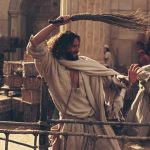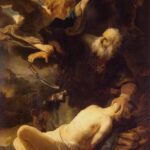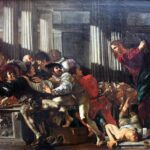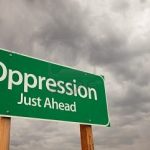The Cleansing of the Temple
One of the more familiar actions of Jesus was the so-called cleansing of the temple. This episode is recorded in all four gospels (Matt 21:12-17; Mark 11:15-19; Luke 19:45-48; John 2:13-22), and has been commented on by believers and non-believers alike. While it is a very well-known episode in the life of Christ, it can often be a little understood episode.
What exactly was the purpose of this action? Was it just a fit of rage? Was he engaging in an anti-capitalist tirade? Just what was this action all about? How are we to understand it? To help in answering these questions a bit of background information is in order.
First, as to the temple, this was in a sense the third Jewish temple. The first was built by Solomon in 967 B.C. It was levelled by the Babylonians around 587 B.C. Zerubbabel built the second temple in 516 B.C. during the return from exile (Ezra 6:14-16).
This second temple was massively enlarged and redone by the Hasmoneans and Herod the Great. This “third” – or redone second – temple was begun around 20 B.C. and was still under construction during the time of this episode (Mark 13:1). It was destroyed by the Romans in 70AD.
Second, there had already been two previous cleansings of the temple. The first took place under Josiah. We read about his extensive reforms in 2 Kings 23. The second occurred around when Judas Maccabaeus cleansed it after the desecration of Antiochus Epiphanes in 167 B.C. (as recorded in 1 Macc. 4:56-59). And a future cleansing of the temple was also foretold (Mal. 3:1ff; Zech 14:21, eg.)
And third, as already mentioned, all four gospels record this incident. Luke offers the shortest account, while John has a detailed longer version. Matthew and Mark both couple it with the story of the cursing of the fig tree. There are some differences. For example, only John mentions the fact that Jesus made “a whip out of cords”, and only in John do we find Jesus citing Psalm 69:9.
A major difference is that the Synoptics place this episode at the end of Jesus’ ministry, while John places it quite early on. There is a real possibility that there were in fact two temple cleansings, and there are weighty arguments both pro and con about this.
And in typical Markan fashion, his account of the temple cleansing is ‘sandwiched’ between a split account of the fig tree, with its cursing reported before it, and its withering reported after it. Both of these stories speak to the same theme, so they are worth looking at together.
Non-believers have taken offence at the fig tree story, as have even some believers. Bertrand Russell said Jesus was guilty of “vindictive fury” and others complain about this being out of character for Jesus. But what we have here is an enacted parable. This had nothing to do with a temper tantrum on the part of Jesus, but was an acted out lesson about Israel’s impending judgment.
A fig tree is often used as a symbol of Israel (Jer. 8:13 eg.) and as a judgment on Israel (eg., Is. 28:4; Hos. 2:12). Here more specifically it is used as a symbol about the pending doom of Jerusalem, because of its rejection of Jesus, and the prophets before him. Jesus actually spoke to this same issue in Luke 13:6-9. In that spoken parable he told of a fig tree that for three years did not yield any fruit, and would therefore be cut down. The barren fig tree symbolised the barrenness of temple Judaism.
Jesus tried unsuccessfully to get some fruit worthy of repentance out of Jerusalem – especially its leaders. Because they refused to receive him, their judgment was overdue. And since the temple was the centre piece of both Jerusalem and Israelite religion, Jesus also spoke of the coming destruction of the temple itself.
So both incidents primarily refer to the coming judgment on Israel, on Jerusalem, and on the temple. In the account in John, just after the temple cleansing, Jesus also refers to his own body as the temple, and of how it will be rebuilt after just three days. The temple is where God’s people could meet God, and Jesus was of course exactly that. The Jews will have Jesus put to death, but he here predicts his resurrection on the third day.
What about the overturning of the table and the harsh words about the money changers and the buyers and sellers? The area in question, known as the Court of the Gentiles, was a very large area which could hold very large crowds of both humans and animals.
In this large open air part of the temple animals were sold for sacrifices and money was exchanged into the local currency, in part to pay the annual temple tax. All this was legitimate, as pilgrims from afar who had come to offer sacrifices usually just bought the animals there, instead of bringing them with them.
At major festivals, and especially at Passover, this place would be absolutely full of people and animals. It was a real beehive of activity. Josephus said that when the temple was completed in 66 A.D., a quarter of a million lambs were sacrificed for Passover.
So it was a big time operation. Jesus quotes Jer. 7:11 about the “den of thieves” and rails against the commercialised ritual it had all become. The Sanhedrin who were in charge of this were likely benefitting financially from all this commercial activity. And these transactions should have taken place outside of the temple, not within it.
He also cites Is. 56:7 about the temple being a house of prayer for all nations. It had been something rather different in Jesus’ day. Indeed, it had become a nationalistic symbol and a place of financial chicanery, so was repelling gentiles, instead of drawing them to God. Indeed, the great irony here is that Jesus has to cleanse the Court of the Gentiles because of Jewish defilement.
The entire sacrificial system had become corrupted. The real meaning of sacrifice had been lost (“I desire mercy and not sacrifice”) and Jesus was now come to make the full and final sacrifice. Like the prophets before him, Jesus condemned the corruption of the temple, the priests, and the established system of worship. The poor were especially being marginalised and exploited, and the whole system had become a hindrance to truly knowing and worshipping God.
The temple would no longer be needed, as Jesus was the real temple in which God perfectly dwelt. And his once and for all sacrifice brought an end to all these other sacrifices, which simply foreshadowed his perfect sacrificial work on our behalf.
So the parabolic action of Jesus is as much a warning of its pending doom as its cleansing and reformation. One greater than the temple had come, and it was now he who would become the meeting place of men with God. God was now doing a new thing, and Jesus, not the temple, would become the focal point of communion with God.
Unlike the sterile, barren temple Judaism, Jesus ushers in a new and living way to come into God’s presence. The locus of God’s presence is now no longer confined to just one place, but to wherever Jesus – and his people – are. And in contrast to the unfruitfulness of sterile ritualistic worship, a new and vibrant – even authoritative – worshipping community is established on the basis of Jesus’ triumphant sacrifice.
Finally, while the cursing of the fig tree was the only negative miracle, and while the temple cleansing was his only use of force, we must bear in mind that these episodes are preceded by Jesus weeping over Jerusalem (Luke 19:41). Judgment and restoration are both facets of the prophesied Messiah.
Our attitude toward the church today should be the same. We should weep over it, seek its restoration, but not rule out God’s judgment as part of this process. When God’s people go off the rails, hiding behind religious symbols is no protection against God’s well-deserved judgment. As always, being in right relationship with God should constantly be our highest priority.
[1366 words]




















A sobering thought that comes to me in relation to this episode is that the ways God had given to his people to worship and glorify him, and to symbolise the dealing with sin had been corrupted and were being used for selfish ends. They had become like “salt” that had lost its saltiness. Your point Bill about the irony in the court of the gentiles being cleansed because of Jewish corruption is certainly arresting. The warning in that other statement by Jesus (which seems in this light to be related in nature to the temple cleansing) is obvious. Worth considerable reflection for us all I think.
John Symons
It is always deemed reasonable to imitate Christ as far as His notions concerning love, mercy and grace are concerned – that is, philanthropy etc. But as soon as one dares to imitate Christ as far as His religious indignation and righteous fury goes, one is not honored for ‘following Jesus’ but for being ‘un-Christ-like!’
There are obviously fine lines – that is, one cannot endorse the trashing of a mega-churches sound system just because of this passage – but I think the spirit of this passage ought to be our practice – that is, we ought to imitate the tone of the LORD Jesus here, if not His physical actions.
What Ravenhill said always convicted me “Before He whipped them, He wept for them.” And that really captures the heart of the matter for me; as you mention in your final paragraph.
Many there are today who might pass a grade for being like Jesus in their outward social concern, but very few there are today who could pass a grade for being like Jesus in His protest against, as Paisley would call it “ecclesiastical, religious, spiritual, darkness!”
Jude 3 – ‘contend earnestly for the faith…’ still stands. But it will cost us something to do that rightly!
Forbes Morrison
Great blog post Bill.
There is much that be can concluded from this passage.
Another important thing to consider is that in some of the gospels the cleansing of the temple comes after Jesus’s triumphal entry to Jerusalem on Palm Sunday.
On Palm Sunday you will recall that shouts crying for salvation, “Hosanna” were made. Hosanna is a cry for salvation now.
We know from other accounts that the Jewish people felt oppressed by Roman rule. They didn’t want pagan people ruling over their land.
It’s fairly easy to conclude that they wanted Jesus to slaughter the Romans. They wanted God to judge the Romans.
Instead after entering Jerusalem he headed in the opposite direction to the Roman barracks and went to the temple.
The Jews wanted judgment on the Romans, freedom from foreign rule. Not bad things in themselves, however they knew or should’ve known from Scripture what the reasons for foreign occupation were. It was because of the sin of the people. They also knew from the Old Testament what God required of them in order for foreign rule to end. Indeed the need to repent can also be seen throughout the gospels.
The Jews had seen Jesus riding in on a donkey and failed to realise that this indicated he was coming in peace. He had come to save people from all nations.
Disappointed hopes were a factor in how the religious leaders (who should’ve been leading the people to do what was right) could so easily sway them to turn against Jesus only days later.
At Jesus’s first coming, he had come to save. He desires that none should be lost. He cares for the Gentiles, the people the Jews were driving away.
It is easy when one is focussed on the outward appearance of the present situation to get a completely wrong view of things. It is easy to want God to judge others, but not ourselves. Indeed the earlier example of the woman caught in adultery comes to mind here. Men who had committed adultery wanted a woman who had been caught committing adultery to be put to death.
We know that judgement starts with God’s people. If the Jews wanted the Romans to be judged, well they would have to be judged first.
Matt Vinay